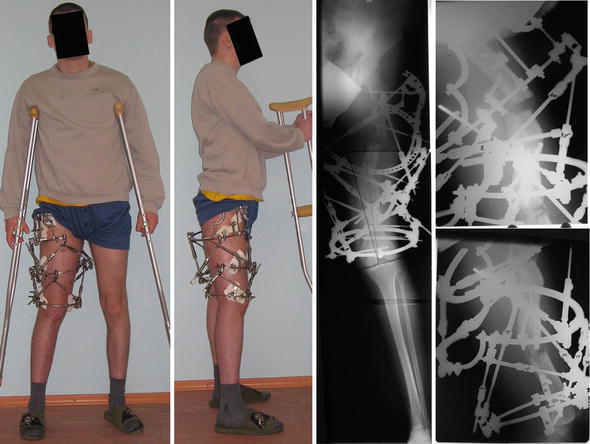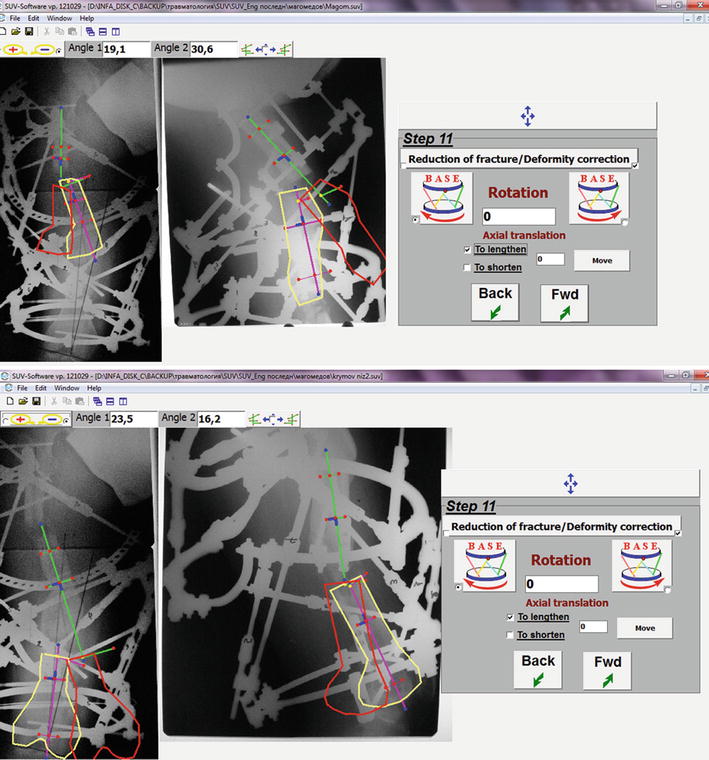Fig. 1
(a, b) Pre-operative clinical pictures and (c, d) radiographs of the right femur
3 Preoperative Problem List
(a)
Complex six-component, three-planar two-level deformity of right femur: right MAD = 14 mm lateral; mLPFA = 75 deg.; mLDFA = 85 deg.; mMPTA = 88 deg.; mLDTA = 91 deg.
(b)
Shortening of the right femur = 4 cm.
4 Treatment Strategy
We chose to perform a two-level correction at each apex of deformity. In addition, gradual lengthening will correct the shortening. The deformity correction was performed using the computer-assisted Ortho-SUV frame.
5 Basic Principles
(a)
Use of external fixation provides possibility of simultaneous gradual lengthening and deformity correction.
(b)
Use of computer-assisted Ortho-SUV frame provides precise, one-step gradual deformity correction.
(c)
Two-level deformity is better to correct from two osteotomies made at each center of rotation of angulation (CORA). This may not always be technically possible. If a multilevel deformity is corrected through a resultant CORA, the regenerate will be curved.
(d)
The osteotomies should be made from small incisions not exceeding 1 cm.
(e)
Use of module transformation of the circular external frame is made in response with callosity formation and decreases the bulkiness of the frame.
6 Images During Treatment
See Figs. 2, 3, 4, 5, 6, and 7.


Get Clinical Tree app for offline access

Fig. 2
Clinical pictures and radiographs after surgery: Ortho-SUV frame (two sets of Ortho-SUV frame) is applied and two-level osteotomy of the right femur has been performed

Fig. 3
The Ortho-SUV software window at step 11: planning of deformity correction at the levels of both osteotomies. The bone fragments anatomical axes are drawn. Yellow




Stay updated, free articles. Join our Telegram channel

Full access? Get Clinical Tree








